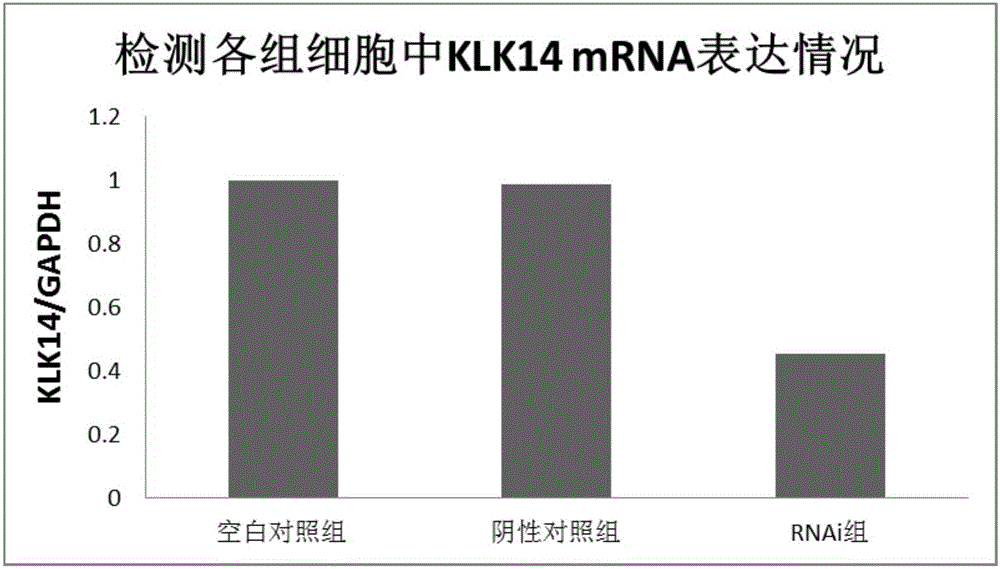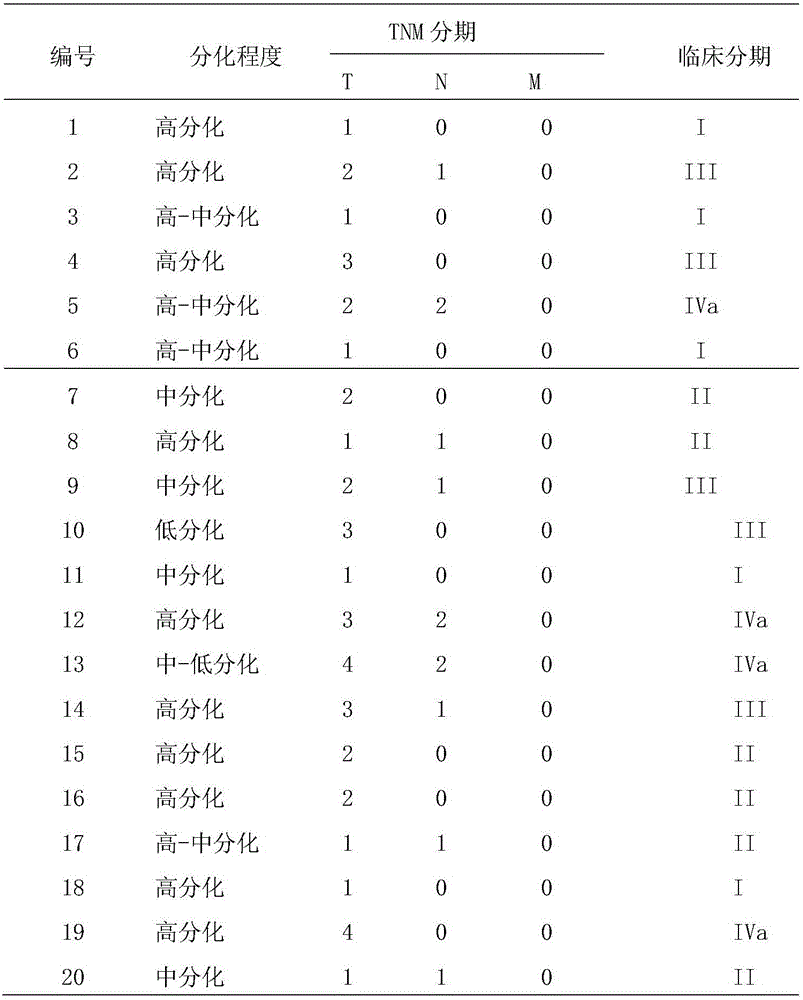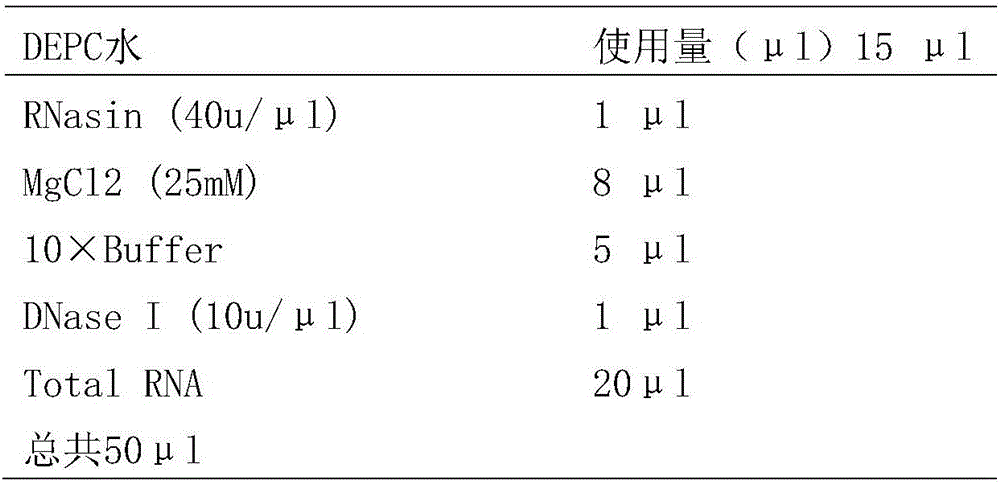Novel target gene for diagnosing and treating tongue squamous carcinoma and application thereof
A tongue squamous cell carcinoma and gene technology, which is applied in the application field of KLK14 gene and its expression products in the diagnosis and treatment of tongue squamous cell carcinoma, can solve the problems of affecting the quality of life of patients, large lesion area, and wide surgical resection, and achieves simplified quantitative detection. Process, repeatability and clear results
- Summary
- Abstract
- Description
- Claims
- Application Information
AI Technical Summary
Problems solved by technology
Method used
Image
Examples
Embodiment 1
[0031] Collection and preparation of materials in Example 1
[0032] Tongue squamous cell carcinoma and adjacent tissue specimens were taken from patients undergoing radical mastectomy for tongue squamous cell carcinoma, and normal mucosal tissue was taken from trauma patients. During the surgical procedure, the specimens were collected within 30 minutes of ex vivo, and then the specimens were collected under the guidance of the pathologist. The size of each sample is about 1.0cm×1.0cm×1.0cm, and the cancer tissue is the central area of the tumor; the corresponding adjacent cancer is the tissue 1-2cm away from the edge of the cancer tissue; the normal mucosa is the tissue without submucosal Epithelial tissue, specimens derived from oral trauma surgical specimens. All specimens were placed in 1.5ml EP tubes and stored in liquid nitrogen tanks. All specimens were collected from patients who had not undergone any form of anti-tumor treatment before surgery and had no history ...
Embodiment 2
[0036] Example 2 Database and biological analysis method
[0037] RNA-seq read mapping
[0038] First, the low-quality reads were removed to obtain clean reads, and then TopHatv1.3.11 was used to match the clean reads to the UCSCH. Obtained in download. The Hgl9 genome includes 25 reference assemblies and 68 alternative assemblies. The pre-built index of version 19 of H. sapiensUCSChg was downloaded from the TopHat homepage and used as the reference genome. When matching with the genome using TopHat, multiple matching sites per read (default to 20) were allowed, with a maximum of 2 mismatches. TopHat builds a possible splicing site library based on exon regions and GT-AG splicing signals, and maps reads that are not mapped to the genome according to these splicing site libraries. The system default parameters of the TopHat method we use.
[0039] Transcript abundance assessment
[0040] The matched read files were processed by Cufflinksv1.0.32, and Cufflinksv1.0.3 normali...
Embodiment 3
[0046] Example 3 KLK14 gene expression in tongue squamous cell carcinoma tissue and adjacent tissue
[0047] 1. Materials and methods
[0048] 1. Materials
[0049] The collection standard is shown in Example 1. 36 cases of tongue squamous cell carcinoma tissues and adjacent tissues were collected and grouped and numbered.
[0050] 2. Method
[0051] 2.1 RNA extraction
[0052] (1) After taking out the sample from the liquid nitrogen tank, take 50-100 mg (soybean size) tissue and grind it, then add 1 ml of Trizol reagent. Transfer the Trizol-tissue lysis mixture to a 1.5ml centrifuge tube, and then extract the total RNA according to the standard operation of Trizol reagent;
[0053] (2) In the separation stage, add 0.2 ml of chloroform to each 1 ml of Trizol, shake the test tube vigorously for 10 seconds, mix well, and let stand at room temperature for 5 minutes. Then centrifuge at 12000rmp for 15 minutes;
[0054] (3) Precipitation of RNA Aspirate the upper aqueous phas...
PUM
 Login to View More
Login to View More Abstract
Description
Claims
Application Information
 Login to View More
Login to View More - R&D
- Intellectual Property
- Life Sciences
- Materials
- Tech Scout
- Unparalleled Data Quality
- Higher Quality Content
- 60% Fewer Hallucinations
Browse by: Latest US Patents, China's latest patents, Technical Efficacy Thesaurus, Application Domain, Technology Topic, Popular Technical Reports.
© 2025 PatSnap. All rights reserved.Legal|Privacy policy|Modern Slavery Act Transparency Statement|Sitemap|About US| Contact US: help@patsnap.com



